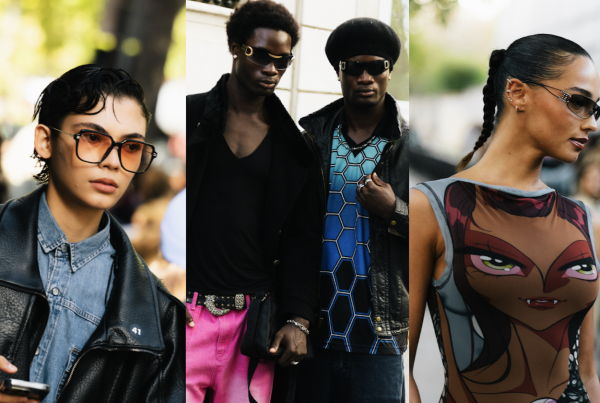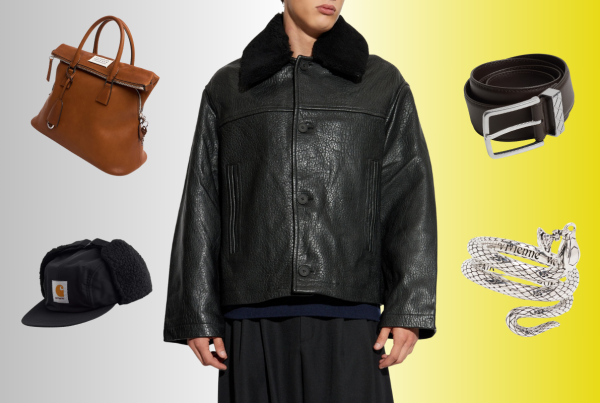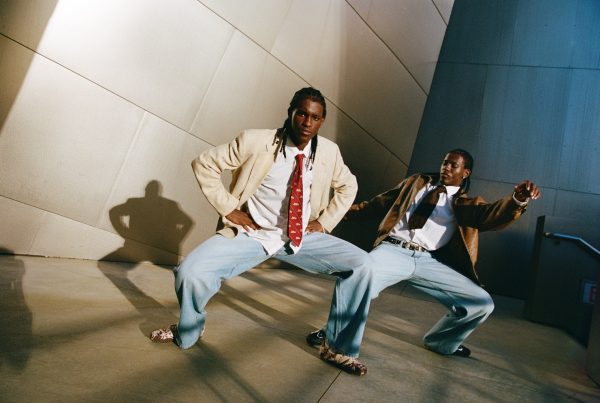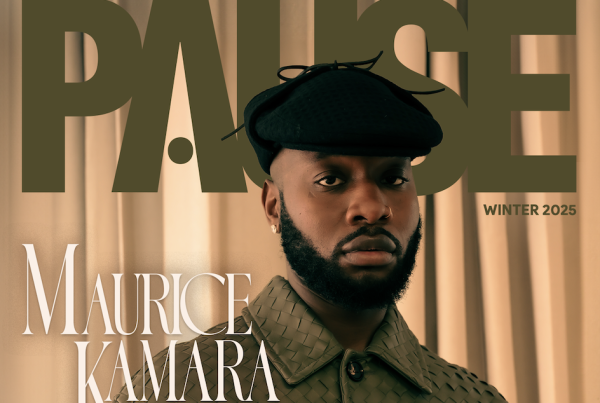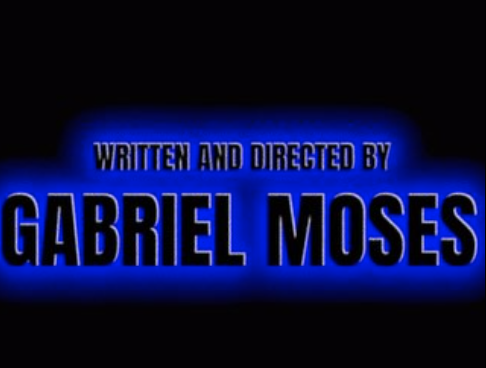PAUSE interviews contemporary menswear designers Agi&Sam about what they learnt from working for other brands, what their current collection is inspired by and the difficulties they faced when first starting up.

Interviewer: Akeil Onwukwe-adamson
Videographers: Curtis Ajike & Benjamin Glean
Photographer: Benjamin Glean
Video Editor: Curtis Ajike
Interviewer: So, you’ve both worked for really prestigious brands like Alexander McQueen, you’ve [Agi] worked for Karl Largerfeld as well, and I was just wondering do you feel that this has influenced your designs at all?
Agi: Yeah, when I was studying fashion, my university was all about being creative and learning how to use that and sort of create a collection, but it actually didn’t. It taught you how to be creative and think conceptually but I could never – I struggled with the in between bit and the development bit and trying to actually make that equal that. When we were at McQueen I think that was the most valuable thing I learned. And just that way that they used research, put things together and just how they tore apart references and influences together was really inspiring.

Interviewer: I could tell actually with your collection that your concept was just as good as the designs.
Agi: Thank you. Having a story is so important, as is research.
Interviewer: Yeah, I was reading about your stories, about the whole company logos, amazing. What were you able to learn from working from other designers first? If anything?
Sam: Yeah, when I was working at Jamie Anderson I think one of the best points of that was actually going into a company that kind of just started developing itself as well and the responsibility I was given at that company to have to sort of produce what we had to produce, so I was made head of print which means I had to make sure the print was done from production, the sampling, and when you’re at McQueen you never get given responsibility like that, you’re only able to like design and stuff which is quite inspiring, it’s really inspiring, but when it comes down to it your business isn’t going to run if you don’t follow yourself –
Agi: I worked at a tailors for a little bit, for like a month, six weeks, and then went to McQueen, I learnt that but in terms of actually setting up a business when we first began we had no clue how to actually operate a business and I really do wish that I had done that as well. Because it’s invaluable.
Interviewer: Yeah, that business side –
Agi: Well that’s literally all it is, as designers we spend like less than 10% of sales a season and actually being creative and designing, researching, the rest of it is just your day-to-day running a business – and we’re terrible at it.
Interviewer: It’s fair to say that your most recent collection for autumn winter 2014 was quite monochromatic, what inspired this decision to use minimal prints
Sam: I don’t know really, I think when we first started the brand we really wanted to try and get the idea of personality, and have fun, especially the colour being a big part of Agi’s heritage. And this has all kind of worked up towards coming to a point. So as we matured, when we first started sorry, it was kind of really fun, and really colourful but as we progressed all these sort of tapered out a bit, but it’s still pretty print heavy, but then with this new collection, as we look at Agi’s heritage, we still use print but it doesn’t necessarily need to be colour, we put it out all monochrome to test a new sort of area for Agi and Sam.

Interviewer: We’ve read that the theme was inspired by exploitation and appropriations. What was the idea behind this? What inspired it?
Agi: Yeah, I’m from Tanzania and went back there last summer for a family wedding and we did a lot of travelling around where my family lived around there which was in the middle of the country, to Kilimanjaro, and there’s where the Masai tribes are. And it was just sort of observations really, you see like a traditional Masai guy you see in the books with their robes and all this sort of stuff when you’re walking down the street, herding their cattle and then you’d see a range rover drive by and I just remember being like how does this even work? Or the Masai guy who stood by the side of the road, he was wearing like Ray bans and a black leather jacket –

Sam: and an iPhone –
Agi: Yeah, he got his iPhone out and I just thought it was an amazing paradox and I started to sort of research into that a little bit, and I was talking to my dad, and there was such a big separation between like the rich and the poor there and then obviously there is always parts that were very blurred. And then we started talking about exploitation and oil companies and petrol companies, and then from there we just sort of took all of that and worked stuff like that and tried to play around with why that happens and almost what would have happened if it was the other way round and African conglomerates coming to the western world and what would it be like so it’s just sort of taking influences from that and just fusing them all together.
Interviewer: Also, do you think that print will remain a staple element in your designs in the future or do you think maybe you’ll change?
Sam: No, I think print’s always going to be a big part of our designs. Again, me studying illustration it’s always sort of something I’m trained in and again your [Agi] family is surrounded by print and colour so it’s something we inherently wouldn’t be able to let go of really but I think it’s just making sure we keep thinking of new ways of doing it, when it’s print it doesn’t necessarily have to be printed digital, colour or drawn, it can be textiles, it can be weave, it can be jacquard, it can be knit – so many different variations we can do so it’s about always exploring those and trying to make sure it’s all new I suppose
Interviewer: A lot of other up-and-coming designers often have difficulties with as you say the business side of it all, what difficulties and hardships did you two face when you both started out together?
Agi: Money for our first collection probably cost us like £500 and the next one I think we spent like £12 and just used anything we had and we managed to get sponsorships from like private companies but again I think it’s more every sort of step has been hurdles so when we first began the first hurdle is literally making a collection on time and showing it. And then sort of a year in you then face all these problems with production and actually running a business dealing with the cash flow, book-keeping and stuff like that and then –
Sam: – you have to use your time
Agi: – yeah exactly doing all that and now we’ve reached this like stage which is actually how to structure everything and expanding and delegating to people certain roles like how to actually facilitate all of that so we’re just always learning plus still trying to think of new ways to be creative which is pretty tough
Interviewer: Do you think being a design duo – sounds like a superhero team – and not by yourselves has helped to evolve the Agi & Sam brand?
Sam: Yeah, I think so, I think it’s always helped to push things out of each other like me not coming from an illustration background – I mean Agi not coming from an illustration background – makes him think about print in a different way than I would which inherently kind of makes me do something I wouldn’t have necessarily wanted to begin with or couldn’t think was possible, and it’s the same with design, like, when it comes to looking at design actually I might think of stuff that he could never think of because I like quite minimal cuts and stuff like that so that forces the best out of us really.

Interviewer: And your collection for Topman last year was really well received well done and what other high street store would you like to collaborate with in the future
Agi: We can’t even say
Sam: We’re sponsored by Topman so it’s probably best – Topman forever!
Interviewer: Yeah, the answer’s Topman
Agi: Topman forever
Interviewer: And how much does the price point in the high street stores influence your designs?
Agi: Not at all. We don’t think you can think about the high street because the numbers and the quantities that you’re working to – there’s no way we can ever compete so there’s no point even for us trying to sort of think about that because if someone wants to buy us we’d hope that they would buy that, not necessarily regardless of price, but it’s obviously going to be more than the high streets so it’s something that you’re not, you know, going to see like 10 people wearing it.
Interviewer: Can you two name three celebrities you would love to see wearing your designs…
Sam: Vincent Gallo… wow this is the thing you can’t because we never really say the celebrities as such it’s always just the strange people
Agi: Solange Knowles, she would be pretty good.
Sam: I always wanted David Hockney to wear it. Dev Hynes would be good.
Agi: Prince Charles I would actually quite to wear.
Sam: Yeah that’s all really.
Agi: Michael Jackson.
Sam: You could probably get some money.
Agi: Someone else from the 60s and 70s.
Sam: Bill Cosby?
Agi: Bill Cosby would be amazing.
Sam: Harold from Neighbours.
Agi: Oh I was going to say Rolf Harris but that’s a bit weird.
Sam: No he definitely can’t wear our clothes oh and who’s the guy.
Agi: F**k see now I can’t stop thinking about paedophiles oh yeah Cliff Richard no but how weird is that.
Sam: Yeah weird. Sorry we’re digressing.

Interviewer: Can you name one fashion label that each of you are loving right now?
Agi: I mean in terms of like UK designers like Craig Green, probably like one of the best things I’ve ever seen in my whole life put together and he’s one of our really good friends as well, so that wasn’t even a plug, I think he’s probably definitely the one to watch, again it’s hard. Like big designers –
Sam: There’s loads
Agi: There’s so many but…
Sam: You just can’t pick one.
Agi: Yohji.

Interviewer: What advice would you give to a recent fashion graduate that has completed their degree and has a collection ready to go? What direction should they go?
Sam: Their own direction. Don’t try to go anywhere near someone else, try and think completely without any influences otherwise you just get lost
Agi: And just yeah know exactly who they are
Sam: and know you’re going to be poor
Agi: Yeah, know you’re going to be poor, and have some sort of idea about what you want to do. You know, we were very naive but I think it was kind of a different time because when we first started, menswear was just like picking up. The men today were still literally a day at the end of fashion week whereas now there’s so much competition; there are so many people to compete with, there are so many organisations.









